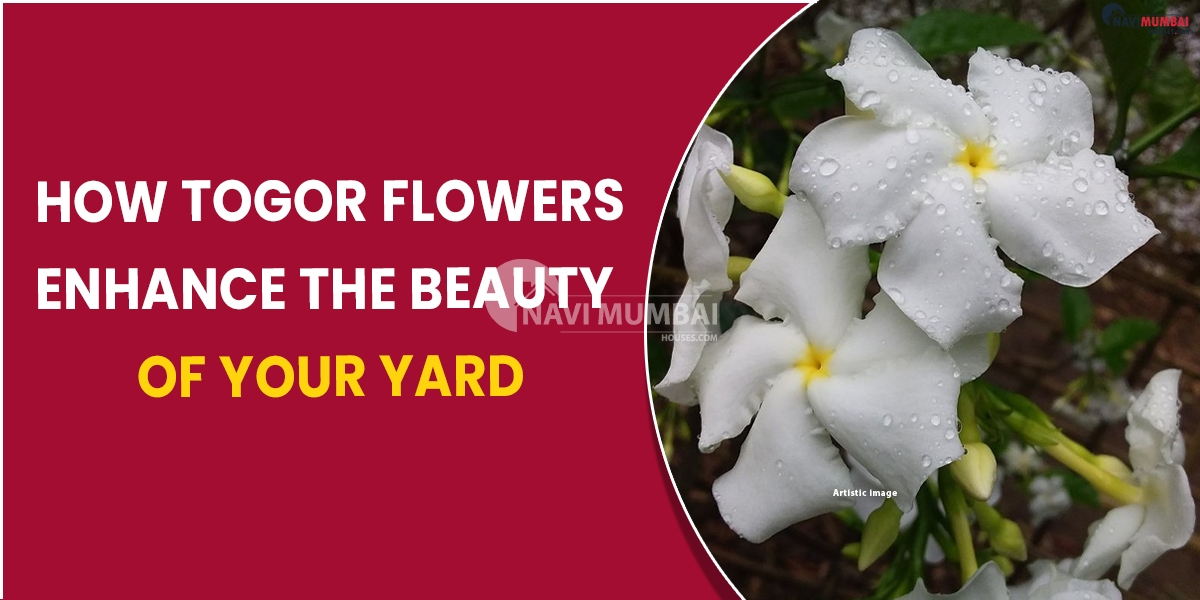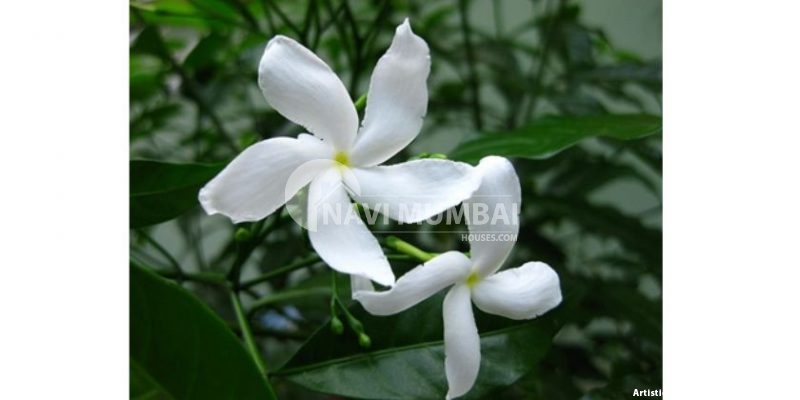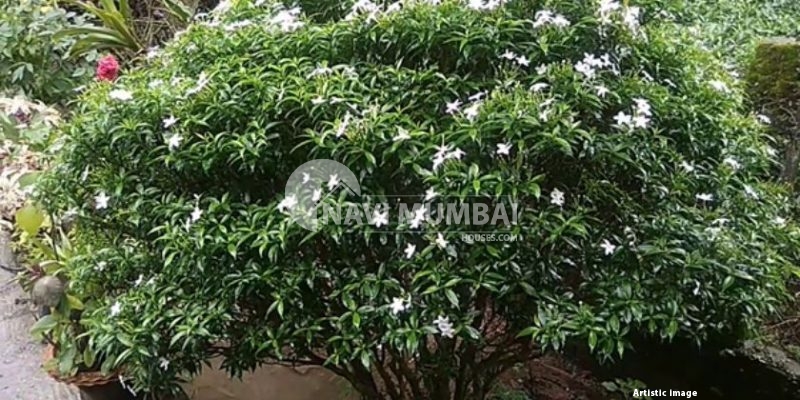
- November 18, 2022
- News, Uncategorized
How Togor flowers enhance the beauty of your yard
The magnificent evergreen flowering shrub known as the togor flower (Tabernaemontana divaricata), often referred to as the Chandni flower plant or the pinwheel flower, is a native of South Asia, Southeast Asia, and China. It also goes by the name crape jasmine in English. Moon beam, Nero’s crown, tagar plant, tagar tree, east Indian rosebay, and carnation of India are some of its other names.
Are looking flats for Sale in Kharghar?

Facts about the togor flower
| Scientific name | Tabernaemontana divaricata |
| Common name | Tagar plant, Tagar tree, east Indian rosebay, Nero’s Crown, moonbeam or carnation of India |
| Native | South Asia, Southeast Asia, and China |
| Height | 4-5 feet |
| Color of the flower | White bloom |
| Sunlight | Direct – partial |
| Flowering season | time all around ( except winters) |
| Best time to grow | Mar-May & Aug – Sep |
| Maintenance | Low |
Togor flower’s physical characteristics
- The plant normally grows to a height of 1.5–1.8 metres and has dichotomously branching stems (5–6 feet).
- The broad, glossy leaves are deep green in colour and measure approximately 15 cm (6 in) in length and 5 cm (2 in) in width.
The waxy blossoms are arranged in small clusters at the stem tips. Both the single-flowered and double-flowered cultivars are produced, and both feature white flowers. The Togor plant blooms in the spring, but occasionally blossoms are seen all year. - The Togor flower’s flowers have a pleasant aroma.
How to grow a togor flower?

- Choose a healthy, semi-hard stem that has sprouted this year. Look for a green stem that is producing new leaves. It must nevertheless be flexible.
- Use small pruning shears to trim the stem to between 4 and 6 inches (10 and 15 cm) in length.
Ideally, the stem should be cut just below a leaf. - A cut made directly below a leaf node will increase the likelihood that the stem will grow strong roots.
- Remove the leaves from the base of the cutting.
Check the potting soil below the surface to make sure no leaves are buried there. The cutting will have a better chance of taking root if the top few leaves are left on the stem. The cutting’s flowers should be deadheaded. You can improve the cutting’s health by doing this.- By absorbing nutrients from the rest of the plant, flowers will naturally try to set seed.
- Additionally, dead blooms will support the growth of mould, destroying the rest of the cutting. Put a small amount of potting soil in the container.
How to grow a togor flower?
- In the container, add healthy, pre-mixed potting soil. Using a single container for many cuttings is suitable because you’ll be transplanting them once they’ve grown roots. After that, lightly water the soil.
- You shouldn’t water the cuttings after planting them because they don’t yet have roots.
- Instead, pre-moisten the ground.
Place the clipping in potting soil that has already been prepared. - Use your finger to press the dirt around the cutting.
The earth should be gently press up against the stem without being move. When you’re finish, the cutting should be firmly press up against the top of the potting soil. - Put the cutting in the light of day. A sunny windowsill is a pleasant place to sit.
- Togor needs a lot of sunlight in order to survive.
- Give the plant 4-6 weeks to develop roots. Once the cuttings’ roots have grown, you can transplant them into a new container.
- Put the cutting in a hanging basket or pot.
As long as it receives enough sunlight, togor can be kept either indoors or outdoors and thrives in a container.
How do I maintain a togor flower?
Sunlight
Keep the plant in a location with lots of direct sunshine for better plant growth. Direct sunshine is ideal for togor plant growth.
Soil
The soil should be fertile, have a high organic content, and have excellent drainage.
Watering
Protection
Disease
To accomplish this, you need routinely search for and get rid of such leaves.
You can spray the leaves with neem oil to use as an organic insecticide.
Don’ts
- Togor thrives in cool environments, but not close to vents.
- Avoid the risk of frost at all times of the year.
- It is feasible to grow it during the monsoons, but if you are doing it on the ground, watch out for root rot by making sure the water doesn’t sit too close to the roots for too long.
- If growing in pots, place the container under a green net or some other sort of shade to prevent overwatering by rain.
- Keep the plant from getting too much water, especially if the pot has no drainage holes.
Uses for togor flower
- It could be hypnotic and sedative (causing sleep).
- Toger flower could have anticonvulsant qualities (may reduce seizures).
- It might possess concentrating characteristics.
- Possibility of spasmolytic (may relieve muscle spasm).
Muscles can also be relax using it. - On the brain, it exerts a calming and tranquil effect.
- It offers momentary relief from insomnia, moderate anxiety, and jitters.
- Traditional uses for togor include the treatment of colic, nervous stomach (digestion influenced by the stomach), and intestinal spasms (severe abdominal pain, usually in babies).
- The bitter flavour of togor may help with hunger and digestion.
- It lessens Kapha and Vata.
- It also possesses gas-relieving and carminative effects.
- Togor may slow down the heartbeat and lower blood pressure.
Togor tea can be made by soaking dried roots in boiling water.
Cautions: Togor flower
Togor is poisonous, just like many other plants in the Apocynaceae family. It contains glycoalkaloids solanine and atropine-like alkaloids, both of which are harmful to dogs if swallowed.
3 BHK Flat For Sale In Sector 36 Kharghar | Luxurious 3 BHK Flat
You’re looking for Buy Home In Borivali we have the Best Buy Properties In Mumbai Like Ready to Move & Nearby possession: https://navimumbaihouses.com/property/search/buy/borivali/
If you want daily property update details please follow us on Facebook Page / YouTube Channel / Twitter









